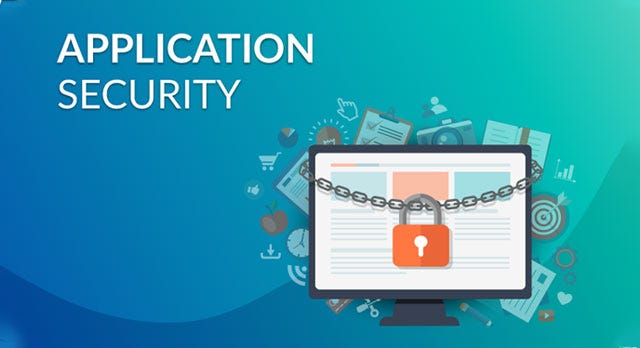
What Is Web Application Security?
Web application security is the practice of protecting websites, applications, and APIs from attacks. It’s a broad field, but its core purpose is to ensure that web applications operate reliably while defending the business against cyber vandalism, data theft, unethical competition, and other harmful consequences.
Because the Internet is global, web applications and APIs are exposed to threats from anywhere in the world. These threats vary in scale and complexity, so web application security includes a range of strategies that span the entire software supply chain.
What Are Common Web Application Security Risks?
Web applications are vulnerable to different types of attacks, depending on the attacker’s objectives, the organization’s operations, and specific weaknesses in the app. Below are some of the most common web application security risks.
Zero-Day Vulnerabilities
These are security flaws unknown to the application’s developers, meaning no fix is yet available. More than 20,000 zero-day vulnerabilities are discovered each year. Attackers aim to exploit them quickly, often trying to bypass any protections security vendors may deploy.
Cross Site Scripting (XSS)
This vulnerability lets attackers inject client-side scripts into web pages, allowing them to steal data, impersonate users, or trick users into revealing sensitive information. Learn more about how to prevent XSS attacks.
SQL Injection (SQLi)
SQL injection (SQLi) happens when attackers exploit flaws in how a database executes search queries. It allows them to access sensitive information, modify permissions, or damage data. Learn more about how to prevent SQL injections.
Denial-of-Service (DoS) and Distributed Denial-of-Service (DDoS) Attacks
These attacks flood a server or its infrastructure with traffic, causing it to slow down or fail entirely. Legitimate users are then unable to access the application.
Memory Corruption
This occurs when data in memory is unintentionally changed, leading to software instability. Attackers may exploit this through buffer overflow or code injection to hijack the system.
Buffer Overflow
This happens when software writes more data to a memory buffer than it can handle, overwriting adjacent memory. Attackers use this to inject and execute malicious code.
Cross-Site Request Forgery (CSRF)
CSRF tricks a victim into making an unwanted request using their authentication credentials. Attackers can then access, modify, or delete important information—especially dangerous when targeting admin accounts.
Credential Stuffing
Attackers use automated tools to try large volumes of stolen username/password combinations on login pages. If successful, they can steal data or perform unauthorized transactions.
Page Scraping
Bots are used to extract large amounts of content from a website. The stolen content can be used to undercut competitors, impersonate the brand, or support other malicious activities.
API Abuse
APIs allow different software applications to communicate. If an API has vulnerabilities, attackers can inject malicious code or intercept sensitive data. API abuse is increasing as API use grows. The OWASP API Top Ten lists the most critical API security risks today.
Shadow APIs
These are APIs developed and released without informing the security team. Because they go undetected, they may expose sensitive data and increase the organization’s risk.
Third-Party Code Abuse
Many web applications rely on third-party tools, like payment gateways. If these tools have vulnerabilities, attackers can compromise them to steal data, interrupt service, or inject malicious code. Magecart attacks are a common example and are considered browser supply chain attacks.
Attack Surface Misconfigurations
An organization’s attack surface includes all its Internet-accessible IT assets—servers, devices, SaaS platforms, and cloud resources. Misconfigurations or overlooked components can leave these systems exposed.
What Are Important Web Application Security Strategies?
Web application security is constantly evolving. As threats and vulnerabilities change, so do the best practices. However, certain baseline security measures are essential for all organizations and should align with specific business needs:
DDoS Mitigation
DDoS mitigation services sit between the public Internet and your servers, filtering traffic and absorbing attacks. These services protect against large-scale attacks that could crash even the strongest infrastructures.
Web Application Firewall (WAF)
WAFs detect and block traffic that may be exploiting web application vulnerabilities. Since new threats emerge constantly, WAFs provide critical protection that’s hard to manage manually.
API Gateways
API gateways help identify shadow APIs and block suspicious traffic targeting API vulnerabilities. They also allow centralized management and monitoring of all API traffic. (Learn more about API security.)
DNSSEC
DNSSEC ensures that your web application’s DNS traffic is correctly routed and safe from interception by on-path attackers.
Encryption Certificate Management
Third-party services can handle critical parts of SSL/TLS encryption—such as generating private keys and renewing or revoking certificates—so nothing important is missed, reducing the risk of exposing private traffic.
Bot Management
Bot detection systems use machine learning and other methods to distinguish automated traffic from real users, preventing malicious bots from abusing web applications.
Client-Side Security
Client-side security tools monitor third-party JavaScript and code changes, allowing organizations to detect and stop threats from external dependencies.
Attack Surface Management
Modern tools give organizations a central platform to visualize their full attack surface, assess vulnerabilities, and quickly address threats.
What Application Security Best Practices Should Organizations Expect from Their Vendors?
Web developers can take proactive steps during the development process to prevent common attacks. The OWASP Top 10 highlights the most widespread security risks in web applications. Here are some key practices vendors should follow:
Requiring Input Validation
Preventing improperly formatted or unexpected input data helps block injection attacks and other exploits.
Using Up-to-Date Encryption
Encrypting stored user data and using HTTPS for all traffic helps protect against data theft and tampering.
Offering Strong Authentication and Authorization
Requiring secure passwords, offering multi-factor authentication, and implementing access controls can stop attackers from taking over accounts or moving laterally within a system.
Keeping Track of APIs
Using tools to detect shadow APIs is helpful, but it’s even better to manage APIs closely from the beginning to avoid gaps in visibility.
Documenting Code Changes
Keeping a record of code updates helps development and security teams identify and fix vulnerabilities quickly.
How Does CyberVolt Keep Web Applications Secure?
CyberVolt operates a global infrastructure that provides many of the core web application security services mentioned above. These include DDoS mitigation, Web Application Firewall (WAF), API protection, DNSSEC, managed SSL/TLS, bot management, client-side security, and more.
All CyberVolt services are designed to run across our global network, enabling threat mitigation close to the source. They are fully integrated with performance optimization tools, ensuring that security never compromises speed. Plus, they work with any website infrastructure and can often be deployed in just minutes.
Learn more about CyberVolt’s application security solutions or get started with a plan today.




